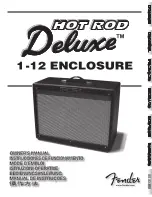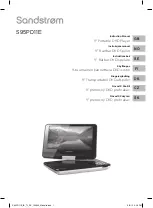
– 3 –
FORM
MODELS 10591, 10592 & 10593
1. Loose connection
2. Circuit breaker tripped
3. Voltage drop
4. Seized pump
1. No oil in reservoir
2. Motor rotation
3. Oil level low
4. Suction strainer is clogged
5. Cylinder piston seals are cut or worn out
6. Reservoir breather is dirty or clogged
7. Pump to motor coupling disengaged
1. Low oil level
2. Air in system
3. Suction strainer or inlet filter is clogged
1. System relief valve set too low, or leaking
2. Pump worn out
3. Air in system
4. Oil temperature is too high
1. Check wiring
2. Reset circuit breaker
3. Use heavier gauge wire
4. Replace pump
1. Check oil level, refill
2. Rewire
3. Add oil as needed
4. Clean suction strainer
5. Replace cylinder or repair seals
6. Clean reservoir breather and reinstall
7. Inspect coupling for proper engagement
1. Add oil as needed
2. Bleed air from highest fitting in system by
loosening fitting very slightly and operating
unit until bubbling of air stops, then tighten
3. Clean suction strainer or inlet filter
1. Check system relief valve for proper setting
with pressure gauge in outlet line
2. Replace worn parts or pump
3. Bleed air from systems
4. Let oil cool below 160°F
SYMPTOM
POSSIBLE CAUSE(S)
CORRECTIVE ACTION
REPLACE OR REPAIR DAMAGED OR WORN POWER
CORDS IMMEDIATELY.
DO NOT OPERATE UNITS WITHOUT PROPER GROUNDING.
9. DOUBLE CHECK ROTATION! Motor rotation is clock-
wise facing fan end of motor.
Do not run hydraulic unit dry; Severe pump damage
may result.
Operation
Prior to operation:
1. Double check all hydraulic and electric connections.
2. Confirm that reservoir is filled with hydraulic fluid.
3. Put all equipment guards in place.
4. Clear all persons from work area.
5. Check for loose tools, equipment, or anything that might
interfere with operation of equipment.
OPERATION:
1.
Start Up
– When initially starting unit up, be sure to jog
the unit (intermittently run unit) several times. This will
prime the pump and fill the hydraulic lines.
Check motor fan rotation at this time to avoid damaging
pump or pump shaft seal.
IF MOTOR IS RUNNING WRONG ROTATION, SHUT OFF
ELECTRICAL POWER BEFORE ATTEMPTING TO
CHECK OUT MOTOR WIRING!
2. After hydraulic lines have been filled, check reservoir for
sufficient oil level. Replenish oil level if necessary.
Do not overfill.
Maintenance
1. Keep the reservoir filled with hydraulic fluid. Use a good
quality automatic transmission fluid (ATF). To fill the
reservoir with clean oil, use a clean funnel fitted with a
fine mesh wire screen. Do not use a cloth strainer.
Most pump/fluid motor failures, valve malfunctions, and
short unit life can be traced directly or indirectly to dirt or
other foreign materials (water, chips, lint, etc.) entering
or already in the hydraulic system.
2. Make frequent inspection of hydraulic fluid and change
if contaminated.
3. Regularly inspect hydraulic hoses and fittings for wear
or leakage.
4. Keep the unit clear of dirt and foreign materials.
5. Keep electrical connections clean.
WARNING
WARNING
WARNING
Motor won’t start
Will not pump oil (Motor runs
but cylinder does not move,
or moves slowly)
Pump motor unit is noisy
Unit does not develop full
pressure
Troubleshooting Chart
CAUTION
CAUTION
CAUTION
CAUTION





















